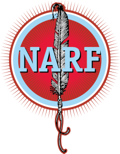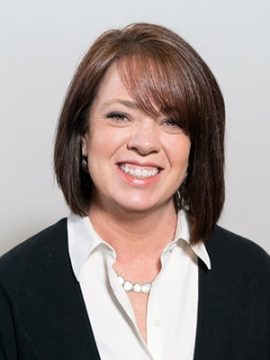Tribal communities are working with voter advocacy organizations in South Dakota and other states, to advocate for fairness in their local redistricting processes. For more information on how to get involved, visit: https://vote.narf.org/redistricting.
As South Dakota Legislature considers public input prior to meeting to finalize new district maps for the state on Nov. 8, NARF would like to share the perspective of Amy Scott-Stoltz, President of the League of Women Voters of South Dakota:
“I just want my damn roads paved!” the tribal leader thunders after no elected official responds to his tribe’s concerns. “I wish it was easier to access affordable healthy food,” says the mother desperate to care for her ailing 9-year old. “I’m tired of buying bottled water because our tap water is not safe to drink,” the exhausted father sighs.
When democracy works, we elect officials who represent us, look out for us, and are accountable to us. When democracy doesn’t work, we are left feeling like there is no way to make change and no one looking out for us, our community, and our children.
Every 10 years, district lines are redrawn to reflect population changes. The South Dakota Legislative Redistricting Committees have been engaged in this process since March of this year, and the full South Dakota Legislature look to adopt redistricting maps at a special session on November 8.
Longer lasting and arguably more influential than even your vote, redistricting decisions equate to power. Fair redistricting empowers all South Dakotans to have appropriate representation and resources. The decisions made now will dictate representation and resources for the next 10 years.
So it is understandable that at each and every meeting of the Redistricting Committees, tribal leaders, tribal organizations, and tribal representatives have pleaded to keep House Districts 26A and 28A and Senate Districts 26 and 27 drawn in a manner that allows them to continue to have their rightful voice and elect their candidates of choice. Additionally, under a federal law known as Section 2 of the Voting Rights Act, Native Americans in these four districts are entitled to a map that allows them to elect their candidates of choice.
Beyond the legal requirements, I also have realized that in addition to be being the right thing to do for tribes, fair representation of our Native American citizens benefits all South Dakotans. Fairly drawn lines allow all of us to elect representatives that respond to our specific concerns and needs, such as infrastructure and healthcare. Because of this reality, in recent months I have testified to the Legislative Redistricting Committees to ask that they protect the four Native American majority districts. I did this because fair lines result in a stronger democracy. Voters should choose their representatives, not the other ways around.
Fair district lines are a long-term solution to help make our state stronger, more just, and a great place to live. The South Dakota I live in has a place for all of us to have a voice in the future of our state, regardless of our background, where we live, or the color of our skin. Ensuring our Native American neighbors have an effective voice will allow them to be represented fairly, not better or worse.
I hope that you can join me in asking the Redistricting Committees to maintain House Districts 26A and 28A and Senate Districts 26 and 27 in a map that continues to give Native Americans a meaningful opportunity to elect their representatives. All South Dakotans deserve fair maps.
Amy Scott-Stoltz, President
League of Women Voters of South Dakota
Born and raised in Sioux Falls, Amy Scott-Stoltz serves South Dakota as a community leader committed to connecting fellow residents to their means to participate in the shaping of their neighborhoods, cities, state, and government. Scott-Stoltz is the President of the League of Women Voters of South Dakota.
More blog posts
 Every 10 years, district lines are redrawn to reflect population changes. The South Dakota Legislative Redistricting Committees have been engaged in this process since March of this year, and
Every 10 years, district lines are redrawn to reflect population changes. The South Dakota Legislative Redistricting Committees have been engaged in this process since March of this year, and  Amy Scott-Stoltz, President
Amy Scott-Stoltz, President
